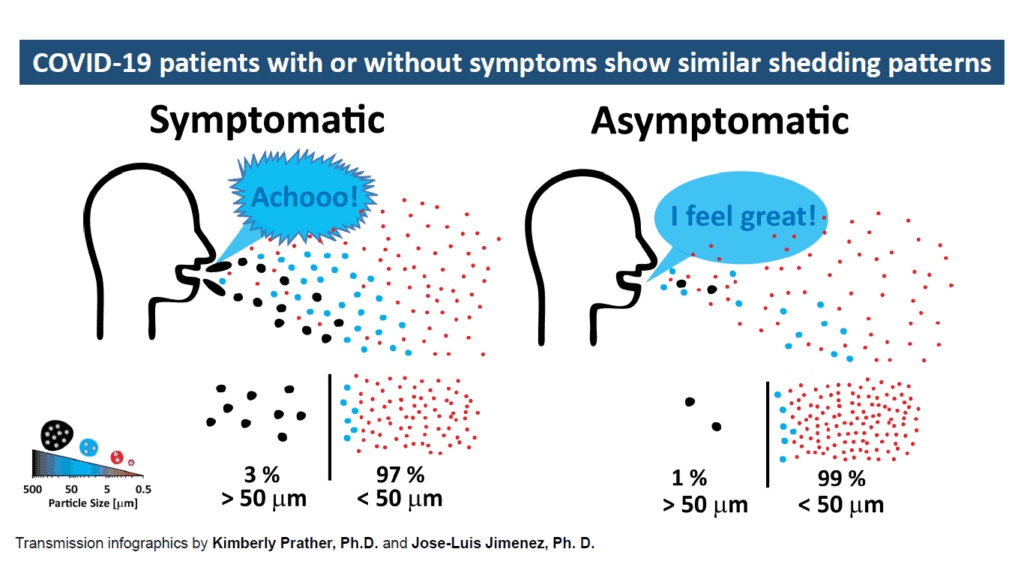We are learning more about how COVID-19 affects people every day, and this new find confirms what we’ve been fearing: asymptomatic people can pass the virus with the same ease.

We know that SARS-CoV-2, the virus causing COVID-19, is transmitted through direct contact with respiratory droplets of an infected person (generated through coughing and sneezing). Individuals can also be infected from and touching surfaces contaminated with the virus and touching their face (e.g., eyes, nose, mouth). The COVID-19 virus may survive on surfaces for several hours, but simple disinfectants can kill it.
Available evidence from contact tracing reported by countries suggests that asymptomatically infected individuals are much less likely to transmit the virus than those who develop symptoms. However, researchers from South Korea reported in JAMA Internal Medicine that patients with confirmed asymptomatic COVID-19 infections shed virus at similar levels to those who are experiencing symptoms. “Viral shedding” refers to the release of the virus from an infected host. The investigators concluded that “isolation of infected persons should be performed regardless of symptoms.”
Their cohort study involved 303 patients who were isolated at a community treatment center in Cheonan in March. Healthcare workers carefully tracked patients’ symptoms during isolation. Among the group, 193 (63.7%) had symptoms at the start of isolation and 21 (19.1%) of the asymptomatic patients went on the develop symptoms. Healthcare workers also conducted reverse transcription polymerase chain reaction (RT-PCR) tests on lower and upper respiratory tract samples on multiple days at doctor discretion. Cycle threshold values for SARS-CoV-2 were similar for both asymptomatic and symptomatic patients. Viral shedding lasted about 17 days in asymptomatic patients and 19.5 days for symptomatic and pre-symptomatic patients.

Why are some people asymptomatic while others are not? SARS-CoV-2 uses the angiotensin-converting enzyme 2 (ACE2) as a cell receptor to invade human cells. Using the spike-like protein on its surface, the SARS-CoV-2 virus binds to ACE2 – like a key being inserted into a lock – prior to entry and infection of cells. Hence, ACE2 acts as a cellular doorway.
The ACE2 receptors appear to be more prevalent in older people and those who are obese than in younger and healthier people. That may partly explain why so many young people have not been as badly affected by the virus as those older than 60. Previous exposure to other coronaviruses, which can give people “T-cell immunity” to similar viruses, receiving a lower viral load of COVID-19 and other lucky genetic variations may also contribute to why some people having less severe or not symptoms to infection.


